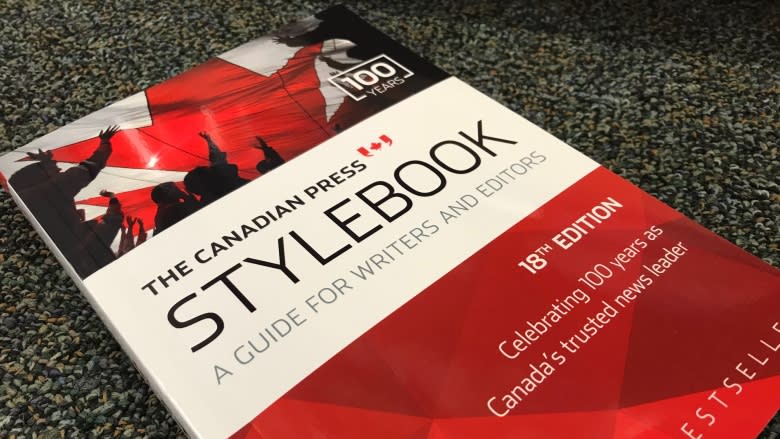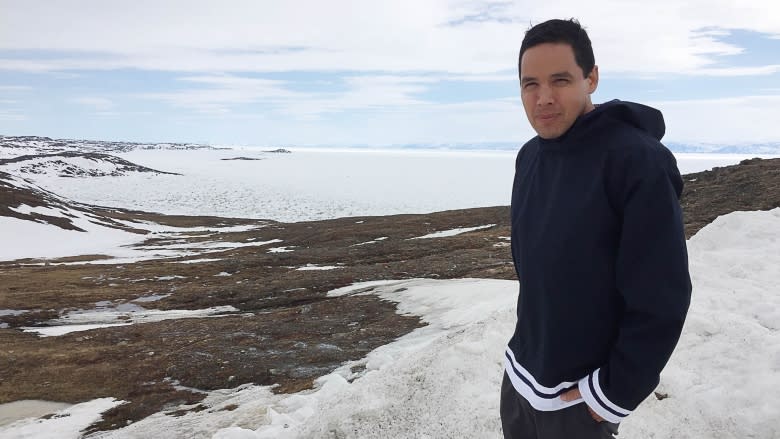Recall 'embarrassing' edition of CP Stylebook full of errors on Inuit, says journalism professor
All printed copies of the most recent Canadian Press Stylebook — full of "embarrassing" typos and errors about Inuit — should be recalled immediately, no matter the cost, says a Carleton University journalism professor.
The 18th edition of the CP Stylebook — a widely used style guide for journalists and journalism students across Canada — was published in September with an updated section on Indigenous people.
But the section on Inuit is replete with errors, as Nunatsiaq News reported Thursday.
That's because it was copied almost verbatim, errors included, from a Journalists for Human Rights' style guide for Indigenous reporting. The Toronto-based media NGO worked with the Canadian Press Stylebook team, and provided the text of the guide to renew CP's outdated edition for reporting on Indigenous people.
"It's embarrassing to say the least," said John Kelly, an adjunct research professor with Carleton University's School of Journalism.
"At [Carleton] ... the Stylebook is kind of the Bible, we follow it to the letter."
But CP Stylebook editor James McCarten, although apologetic for the "oversight," told CBC News he had no plans of recalling the estimated 3,000 printed copies.
McCarten, said he became aware of the issue just recently, and will most likely inform people through Twitter about the errors, while working to correct the online version and the next print run.
But that's not good enough, said Kelly, a member of the Haida First Nation from Skidegate, B.C.
Kelly said a lack of concern for incorrect language usage in the context of Indigenous people, especially Inuit, "really shouldn't be tolerated."
Kelly said that when it comes to spelling, Carleton journalism professors have an informal policy where a student receives an automatic 'F' for misspelling a name.
He also added that newspapers will generally print a retraction for their errors within 24 hours.
"If we're going to do that in terms of factual accuracy when it comes to news stories, how much more should we do it for books that our students are using to write their stories?" said Kelly.
The errors
The passage in contention reads: "There are many dialects of Inuktitut ... Inuit from Nunatsiavut are called Nunatsiavummiut (sometimes Labradorimuit but this is an older term), Inuit from Nunavik are called Nunavimmiut, Inuit from Nunavut are called Nunavimmiut, and Inuit from Inuvialiut are called Inuvialiummuit."
The errors include:
- Typos using the wrong suffixes (i.e. "Labradorimuit" versus the correct "Labradorimiut" and "Inuvialiut" versus the correct "Inuvialuit");
- A typo with the word "Nunavummiut" spelled incorrectly as "Nunavimmiut";
- The reference to "Inuktitut" as the language of Inuit, when in fact there are several Inuit dialects. The word "Inuktut" should be used, the established term for Inuit language as a whole.
There is also an incorrect suggestion to refer to "Inuit from Inuvialiut" as "Inuvialiummuit" — the word Inuvialuit refers to people, not a geographical region.
"Inuvialuit means 'real people of the Western Arctic' or 'Inuit from the Western Arctic,'" said a spokesperson for the Inuvialuit Regional Corporation, an organization that represents Inuvialuit, in an email.
And as for the word "Inuvialiummuit"?
"I have not heard of 'Inuvialiummuit' in all my 26 years of working for IRC," said the spokesperson.
'I'm truly sorry,' says JHR guide editor
Lenny Carpenter, the editor for the Indigenous reporting style guide and program manager for Journalists for Human Rights, said he accepts full responsibility for the mistakes.
Carpenter said one of the organization's program goals was to change the style guide to reflect Indigenous voices in Canada.
Upon learning that the Canadian Press was working on its 18th edition this summer, Carpenter set out to work on this project with several journalists and scholars who are Indigenous, or have a background in Indigenous issues.
Carpenter, a former journalist and editor, said he had difficulty finding Inuit journalists to take part in the project. He said he reached out to several Inuit journalists, but found only one freelance Inuk journalist as a contributor.
"I was disappointed to learn that [it was inaccurate], and disappointed on myself for not fact checking," said Carpenter.
McCarten said no one fact checked the style guide provided by Carpenter.
"We didn't see the need to go any further beyond in terms of double checking unfortunately," said McCarten.
"Personally, both as the program manager, as the editor for the guide and as … a First Nation person in Ontario that's also been marginalized and misrepresented, I'm truly sorry," said Carpenter, a member of Attawapiskat First Nation in Ontario.
Talk to Inuit reps, says president of Inuit organization
But reaching out to Inuit journalists for a project like this isn't enough, says the president of the largest Inuit organization in Canada.
"I know people are trying their best. I know this document, this style guide was put forward with the best intentions," said Natan Obed, president of Inuit Tapiriit Kanatami.
"But it's still a challenge to get journalists to accept that we have governance models and we have representation organizations that speak for our interests ... [journalists should] ask us directly how we would like to be referenced."
Obed, who says he mostly works with journalists who don't know much about Inuit, says the impact of an erroneous style guide may affect Indigenous reconciliation.
"The implications are far and wide if a style guide is being used that isn't 100 per cent correct in the way that it articulates Inuit," said Obed.
Obed said he would work with editors of the style guides if contacted.
People who want to return their 18th edition for a corrected version can do so by contacting the editor.




